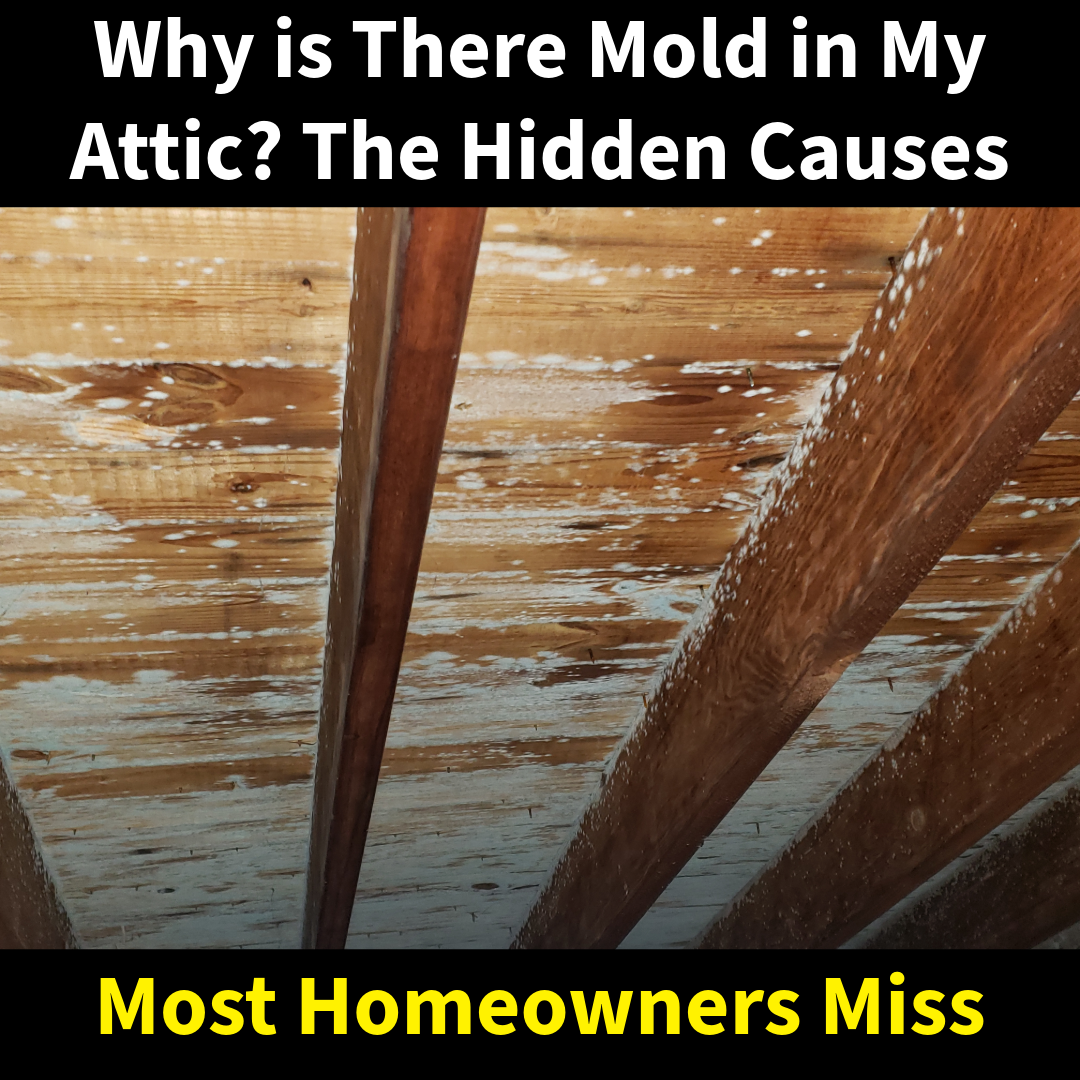Many homeowners are shocked to discover mold in their attic—especially when it’s a part of the home they rarely visit. But attic mold is more common than people realize, and it often forms slowly and silently until it becomes a serious problem. Here’s what might be feeding it—and what to look for before it spreads.
1. Roof Leaks You Never See
Even a small roof leak can allow moisture to enter the attic. Water may drip down slowly onto insulation or framing without ever staining the ceiling below—making it easy to miss until mold takes hold.
2. Poor Ventilation
Your attic needs proper airflow to stay dry. Ridge vents, soffit vents, and gable vents should work together to cycle air and remove moisture. Without it, humid air gets trapped—creating the perfect mold environment, especially during seasonal changes.
3. Over or Under Insulating
Too much insulation? It can block airflow and trap heat, leading to condensation. Too little insulation? Warm, moist air from the house rises into a cold attic and condenses on rafters. Either way, it fuels mold growth.
4. Bathroom Fans Venting Into the Attic
This is a big one. Bathroom exhaust fans should be vented outside the home—not into the attic. When they dump warm, humid air directly into the attic space, it creates moisture buildup fast, and mold is often the result.
5. Inconsistent Temperatures and Seasonal Condensation
Freezing winter air meeting warm interior heat leads to condensation on the wood structure—especially on nails, rafters, and sheathing. This repeated moisture cycle encourages mold spores to thrive.
A Word of Warning About Cheap Mold Jobs
Many restoration companies offer low prices because they simply paint over attic mold. It may look clean when they’re done, but the mold problem underneath is still active—and growing. Without fixing the moisture source or removing the contamination properly, the mold will return. And when it does, the next remediation will likely cost more and require more work to undo the shortcut.
How to Fix It (And Why It Matters)
Ignoring attic mold can lead to structural damage, poor indoor air quality, contamination of HVAC systems, and reduced home value. If you suspect attic mold, don’t rely on a quick bleach wipe or DIY fan trick. A professional inspection can uncover the source, assess the extent, and recommend a proper remediation and prevention plan.
At MSI, we’ve inspected hundreds of attic spaces and understand how mold starts—and how to stop it. Whether it’s ventilation issues, insulation mistakes, or improper exhaust fan setups, we find the cause and provide real solutions.
